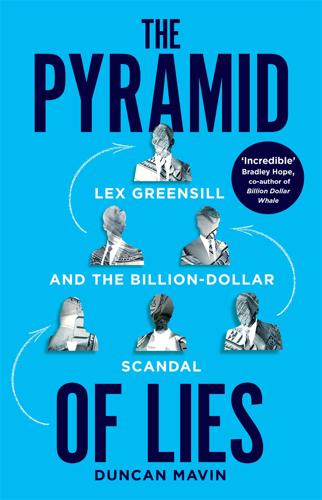
The Pyramid of Lies: Lex Greensill and the Billion-Dollar Scandal
by
Duncan Mavin
Published 20 Jul 2022
He also lost the support of his other big cheerleader at SoftBank. Colin Fan, the former Deutsche Bank executive, had been Greensill’s main point of contact at the Vision Fund from the outset. He represented the Vision Fund at Greensill Board meetings and was well known to Greensill’s senior management team. But his star was falling too. In addition to Greensill, he had overseen the Vision Fund’s investments in Fair and Chehaoduo, both of which Greensill had loaned money to. He was also the main Vision Fund executive responsible for Zume, an automated food delivery business that had pitched Masayoshi Son on the idea of using robots to make pizzas.
…
But what I didn’t know was that Greensill was already deep into talks with the SoftBank Vision Fund, a mammoth $100 billion pool of investor cash tied to Japanese conglomerate SoftBank Group. The Vision Fund was shaking up the rules when it came to investing in new tech companies. Its sheer size meant it could outbid just about anyone. And its core approach was to buy huge stakes in lots of fast-growing companies, knowing that some would be duds and some would pay off big time. Typically, they made decisions fast, and in poured the money. Vision Fund analysts had identified Greensill as a potential investment in early March and were already quickly moving towards a decision on whether to invest.
…
The real celebrations were in Greensill’s offices across London on the Strand. In truth, I’d lost the race I didn’t know I had entered. SoftBank’s Vision Fund had wrapped up its incredibly fast due diligence process only a few days earlier. My victory lasted barely a week before Greensill announced it had secured a gargantuan $800 million investment from the Vision Fund. Later, Doran told colleagues that he was the most valuable employee at the firm because he had held back my story until after the Vision Fund was committed to Greensill. He compared himself to Hodor, a character in the HBO TV series Game of Thrones, who holds back a massive wooden door to prevent demons from getting through.
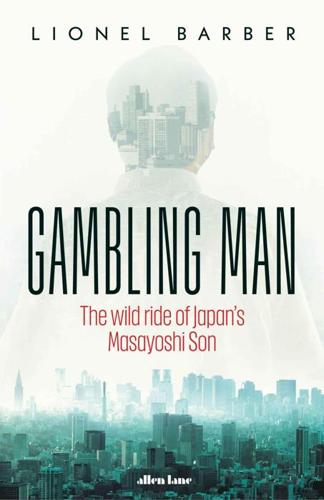
Gambling Man
by
Lionel Barber
Published 3 Oct 2024
From the outset, therefore, the pressure to crystallize profits – from divesting stakes – was far higher than in traditional VC funds. ‘We were always doing things in a giant hurry,’ recalls one former Vision Fund executive. By far the biggest surprise was the man chosen to head the Vision Fund: Rajeev Misra. He had no track record in venture capital. Then again, if the game was about financial alchemy, Misra fitted the bill. In his wilder moments, Masa confided that his dream was to raise not one, not two, but ten Vision Funds, each piled on top of the other. It sounded delusional, but Masa carried on regardless. The result, he claimed, would be $1 trillion under management, the most powerful asset management and venture fund in history.
…
‘It was a horrific experience.’2 Not all the deals were bad. Between 2017 and 2020, the Vision Fund had stakes in ARM, Coupang, Didi, DoorDash, ByteDance, the Chinese internet giant and founder of TikTok, as well as Guardant Health and Roivant Sciences. Both exits from Coupang and Didi produced excellent returns, but overall, says one Vision Fund adviser, ‘There were too many shitburgers.’ By the end of 2016, Masa had assembled the world’s biggest war chest. He had received commitments for $60bn from Saudi Arabia and Abu Dhabi as part of his SoftBank Vision Fund which, at $98.6bn, had fallen just short of its original target.
…
His company developed pocket-sized cameras for smartphones and other commercial applications. By the time the Vision Fund turned up in late 2017, Grannan was in Series D, a fourth round of funding. After initial contacts with Vision Fund executives, Grannan was summoned to Tokyo for a meeting with Masa on 14–15 February 2018. The ex-marine was excited to meet one of the world’s most charismatic investors, but it turned out to be a big letdown. Masa asked a few perfunctory questions, but appeared bored. The two men shook hands on a deal where the Vision Fund would invest $105m. Grannan was dispatched back to the US to work on a term sheet.
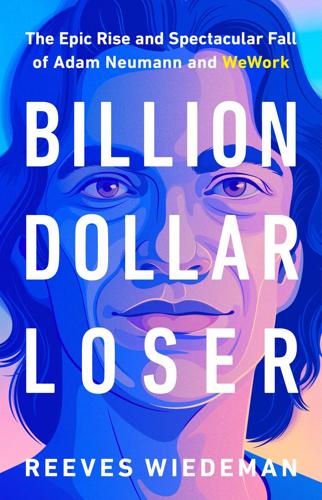
Billion Dollar Loser: The Epic Rise and Spectacular Fall of Adam Neumann and WeWork
by
Reeves Wiedeman
Published 19 Oct 2020
Masa himself had long dreamed of taking SoftBank private, freeing himself from the restrictions that came with being a public company. By lavishing the Vision Fund’s largesse upon start-ups, Masa believed that he was giving young companies “the gift of being private.” Because the Vision Fund’s investments often included large secondary share purchases, such as the $1.3 billion worth of WeWork stock that SoftBank and the Vision Fund bought from existing shareholders in 2017, early investors began describing the Vision Fund’s investments as a new kind of exit strategy: the “Masa-PO.” Over the summer of 2018, Masa began talking with Adam about bestowing such a gift. WeWork was already among the Vision Fund’s largest investments, but part of the fund’s conception was to pursue “blockbuster” deals that would pour not just billions but tens of billions of dollars into individual companies.
…
In October, he had announced the launch of the Vision Fund, a $100 billion venture capital vehicle that was eighty times bigger than the record-setting $1.2 billion Masa had raised in 2000 and four times larger than any other fund in history. The Vision Fund’s limited partners included Foxconn, the government of Abu Dhabi, and Apple, which had so much cash on hand that there weren’t enough productive places to put it. Masa and SoftBank would choose the fund’s investments, and each of the limited partners would receive returns relative to the amount it had put in. The bulk of the Vision Fund was coming from the Saudi Arabian government.
…
When an interviewer asked Masa whether it was true that he had persuaded bin Salman to invest $45 billion into the Vision Fund after a single hourlong meeting in Tokyo, Masa objected to the idea it would take him that long: “Forty-five minutes, $45 billion—one billion dollars per minute.” The Vision Fund, which initially had the code name Project Crystal Ball, was meant to supercharge the work of Masa’s three-hundred-year plan. He believed society was approaching the singularity, when artificial intelligence would become so advanced that humans and machines would be indistinguishable. This shift could be accelerated, and monetized, with enough capital, and the Vision Fund had more money than most venture capitalists would be trusted to invest in their lifetimes.
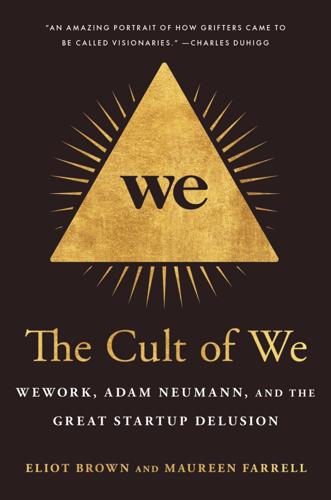
The Cult of We: WeWork, Adam Neumann, and the Great Startup Delusion
by
Eliot Brown
and
Maureen Farrell
Published 19 Jul 2021
Son and Rajeev Misra—head of the Vision Fund—wouldn’t show much in the way of specific figures, and PIF’s head, Yasir al-Rumayyan, would rarely ask follow-up questions. Because most of SoftBank’s investments were private, it was hard for PIF’s team to do its own work. The new employees quickly inferred that al-Rumayyan wasn’t interested in pointed questions from them about the Vision Fund. Further raising eyebrows at the fund was a move by SoftBank to pour much of the Vision Fund into ride-hailing companies around the world. PIF had already put $3.5 billion into Uber and didn’t want the Vision Fund to dive further into the same industry.
…
One after another—the dog-walking app Wag, the car rental company Fair, the hotel company OYO—quickly fell under the microscope of a press that had grown far more skeptical of vision-heavy startups than a few years earlier. The original $100 billion Vision Fund had so far found few standout stars, but had a roster of duds. The biggest investments went into ride hailing—where valuations were far lower than a year earlier—and autonomous driving, where a frenzy had cooled. The onetime dream of turning the fund into a $1 trillion home run now seemed a distant memory. WeWork and the Vision Fund’s promise were unraveling at the very time that Son was trying to raise a second, even larger Vision Fund. This was to be Son’s future—a whole fleet of Vision Funds that would put him in charge of the largest sums ever raised—to be the kingmaker for all of tech.
…
Actually converting those pledges into real money was proving harder than expected. The first Vision Fund had no obvious breakout successes so far, despite investing almost $80 billion. Meanwhile, numerous other high-profile companies in the fund like Uber and the semiconductor company Arm Holdings were significantly lagging behind expectations. Still, Son decided to forge ahead with the second fund. To drum up interest from others, he began crisscrossing the globe trying to persuade his existing investors in the first Vision Fund to kick in even more for Vision Fund 2. He once again turned to Crown Prince Mohammed bin Salman and the Abu Dhabi fund Mubadala, which together had given him $60 billion for the first fund, asking if they would put in money again.
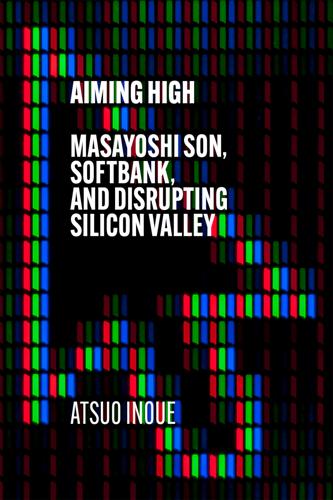
Aiming High: Masayoshi Son, SoftBank, and Disrupting Silicon Valley
by
Atsuo Inoue
Published 18 Nov 2021
Son would comment that the most important thing with these advances was their capacity for making major contributions to the future of humankind. Elsewhere in his comments he would state that the seeds sown with the SoftBank Vision Fund were starting to sprout and bear fruit. As much as Son had previously stated the SoftBank Group was his goose laying golden eggs, by December 2020 this was undoubtedly the case. The SoftBank Vision Fund 1 counted 92 companies in its portfolio (inclusive of companies disposed of), the SoftBank Vision Fund 2 counted 39 companies in its portfolio (including companies where investments were in the pipeline but had not been completed) and the Latin American Fund counted 33 companies in its portfolio (including limited partnership investments), giving a total of 164 companies.
…
And I know Rajeev Misra has been criticised in some quarters, but were it not for him I do not think the SoftBank Vision Fund would have ever been set up. I appreciate his hard work.’ SoftBank family companies such as Vir Biotechnology (in the US), Coupang (a Korean e-commerce company), Grab (a delivery app company based out of Singapore) and Uber are all showing signs of growth and none of them would be where they are now had it not been for Vision Fund investment during the early stages of their existence. ‘I think the reason why Vision Fund companies have grown as much as they have done is because of the shift Rajeev has put in; furthermore, with respect to raising investment funds and any other number of aspects Vision Fund employees and management have done a good job.’
…
Furthermore, with its ‘Beyond Carrier’ scheme launching, SoftBank were creating even more synergy. PayPay, a smartphone payment service and SoftBank Vision Fund portfolio company, entered into a partnership with Paytm, the largest payment service in India, for the purposes of using its technology to help develop its own smartphone payment services in Japan and expand its service offering. There was only one thought in Son’s mind, however: ‘AI is the most incredible thing humans have ever made and I am fully prepared to throw everything I’ve got behind it.’ Chapter 36 Vision Fund The SoftBank Group announced their settlement of accounts for March 2017 on 10 May of the same year; operating profit had increased by 12.9 per cent compared to the previous period to 1.26 trillion yen.
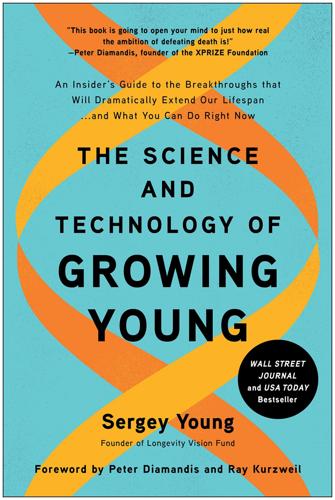
The Science and Technology of Growing Young: An Insider's Guide to the Breakthroughs That Will Dramatically Extend Our Lifespan . . . And What You Can Do Right Now
by
Sergey Young
Published 23 Aug 2021
Whether you are one of those people, or have already caught the “longevity virus,” The Science and Technology of Growing Young is going to open your mind to just how real and close at hand the possibility of defeating death really is! Most other books on longevity look at this field through the lens of a technologist, a scientist, or a medical doctor. This is the first book written for a broad audience by an investor-author in touch with so many companies on the edge of longevity science. Through his Longevity Vision Fund, Sergey has unique access to hundreds of start-ups on the verge of the latest longevity breakthroughs. In this book, Sergey now shares this firsthand knowledge of these companies with you. This includes the personal stories of brilliant pioneers driving innovation forward, and those of the patients benefiting from these amazing new technologies.
…
This latest XPRIZE will attract the best and brightest entrepreneurs and help bring forth the scientific breakthroughs necessary to forge longer, healthier, more equal, and more progressive lives. Sergey is a good friend, thought partner, and a welcome addition to the ever-growing community of longevity visionaries. With his contributions to the Age Reversal XPRIZE, his Longevity Vision Fund, his Longevity @ Work initiative, and now this book, Sergey joins us in our mission to make this world a better place. The future is faster—and better—than you ever thought it was. Whether you are new to the longevity universe or an old hand looking for the groundbreaking innovations, we are super-excited to introduce you to The Science and Technology of Growing Young.
…
Instead, we will see people in the not-very-distant future living to 100, 150, or 200 years of age, and even longer than that, while staying healthy, vigorous, and mentally adept. If that sounds crazy, read on. Entrepreneur David Gobel, together with the father of biogerontology (and scientific advisor to my Longevity Vision Fund), Aubrey de Grey, are founders of the not-for-profit Methuselah Foundation, whose goal is to “make ninety the new fifty by 2030.” David and Aubrey came up with the longevity escape velocity model of life expectancy, which predicts that humans will be able to live indefinitely when advances in medicine and technology outpace the passage of time.

Blood and Oil: Mohammed Bin Salman's Ruthless Quest for Global Power
by
Bradley Hope
and
Justin Scheck
Published 14 Sep 2020
Now he had more financial firepower than just about anyone on earth and a fly-by-the-seat-of-his-pants boss who was happy to make multi-billion-dollar investments with a quick meeting and a “gut instinct.” The only problem was that the Vision Fund had about twenty employees and no investment procedures or compliance apparatus. Even worse, though it had already started investing money, it had to temporarily hold money on SoftBank’s balance sheet while the fund’s team was getting built up. The team members at PIF were skeptical of the Vision Fund their boss had signed on to, but they were in no position to oppose it. Instead, they started pushing for details and proof the firm was ready to accept so much cash. The official closing for the Vision Fund was still months away, but on another visit by Masayoshi, Nizar, and Rajeev to Riyadh, the prince appeared concerned.
…
Rumayyan said the sovereign wealth fund aimed to have $2 trillion in investments, many of them overseas, by 2030. Branson got a $1 billion commitment for the parent of his space tourism company Virgin Galactic. Blackstone already had a commitment of $20 billion for an investment fund, and the Vision Fund was already off the ground with $40 billion from Saudi Arabia. Rajeev Misra, head of the Vision Fund, strutted around the Ritz-Carlton, holding meetings in Masayoshi Son’s huge suite and vaping nonstop. Some international investors pledged to invest money in the kingdom, though they were mainly affiliated with countries or companies looking to build favor with the crown prince.
…
Cast of Characters The Al Saud King Salman bin Abdulaziz Al Saud, son of the kingdom’s founder and father of Mohammed bin Salman Crown Prince Mohammed bin Salman Al Saud Prince Khalid bin Salman Al Saud, Mohammed’s younger brother and former ambassador to the United States Sultana bint Turki Al Sudairi, King Salman’s first wife Fahdah bint Falah al-Hithlain, King Salman’s third wife and mother of Mohammed bin Salman Crown Prince Muqrin bin Abdulaziz Al Saud, King Salman’s half brother and briefly heir apparent Crown Prince Mohammed bin Nayef Al Saud, King Salman’s nephew and a longtime antiterrorism official close to the US government King Abdullah bin Abdulaziz Al Saud, King Salman’s half brother and predecessor Prince Miteb bin Abdullah Al Saud, King Abdullah’s son and former chief of the Saudi Arabia National Guard Prince Turki bin Abdullah Al Saud, the seventh son of King Abdullah Prince Badr bin Farhan Al Saud, a prince from a distant branch of the family, minister of culture, and a longtime friend of Mohammed bin Salman Prince Abdullah bin Bandar Al Saud, another prince and longtime friend of Mohammed bin Salman and head of the National Guard Prince Sultan bin Turki Al Saud, the son of one of King Salman’s brothers, and an outspoken prince whose criticisms got him into trouble with more powerful members of the family The Palace Khalid al-Tuwaijri, the head of King Abdullah’s Royal Court Mohammed al-Tobaishi, King Abdullah’s chief of protocol Rakan bin Mohammed al-Tobaishi, Mohammed bin Salman’s protocol chief and the son of Mohammed al-Tobaishi The MBS Entourage Bader al-Asaker, a longtime associate of Mohammed who runs his private foundation Saud al-Qahtani, an advisor to Mohammed who specializes in quashing dissent Turki Al Sheikh, a longtime companion of Mohammed who has brought foreign sports and entertainment events to Saudi Arabia The Region Mohammed bin Zayed Al Nahyan, crown prince of Abu Dhabi Tahnoon bin Zayed, Abu Dhabi national security advisor Tamim bin Hamad Al Thani, emir of Qatar Hamad bin Khalifa Al Thani, former emir of Qatar Abdel Fattah el-Sisi, president of Egypt Saad Hariri, prime minister of Lebanon Recep Tayyip Erdoğan, president of Turkey Residents of the Ritz Prince Alwaleed bin Talal Al Saud, a cousin of Mohammed and Saudi Arabia’s most prominent international businessman Adel Fakeih, a Saudi businessman who became minister of economy and planning Hani Khoja, a Saudi management consultant Mohammed Hussein Al Amoudi, a Saudi businessman with holdings in Ethiopia Ali al-Qahtani, a general Bakr bin Laden, scion of the bin Laden construction family The Critics Jamal Khashoggi, newspaper columnist with a long history of working for and sometimes criticizing the Saudi government Omar Abdulaziz, Canada-based dissident who criticizes Saudi leadership in online videos Loujain al-Hathloul, women’s rights activist who violated Saudi law by trying to drive into the kingdom from the United Arab Emirates The US Government President Donald Trump Jared Kushner, Ivanka Trump’s husband and an advisor to the president Steve Bannon, former Trump advisor Rex Tillerson, ex-CEO of ExxonMobil, later US secretary of state The Businessmen Jeff Bezos, founder and CEO of Amazon.com David Pecker, CEO of American Media, which publishes the National Enquirer Ari Emanuel, Hollywood agent and cofounder of Endeavor talent agency Masayoshi Son, CEO of Japanese tech investor SoftBank Rajeev Misra, head of SoftBank’s Vision Fund Nizar al-Bassam, Saudi deal maker and a former international banker Kacy Grine, independent banker and confidant of Alwaleed bin Talal A note on naming: In the Saudi convention, a man is identified through a patrilineal naming system. Mohammed bin Salman means Mohammed, son of Salman. His father is Salman bin Abdulaziz, since his father is Abdulaziz bin Saud (known as Ibn Saud), the founder of the current Al Saud dynasty.

Ghost Road: Beyond the Driverless Car
by
Anthony M. Townsend
Published 15 Jun 2020
Cheape, Moving the Masses: Urban Public Transit in New York, Boston, and Philadelphia 1880–1912 (Cambridge, MA: Harvard University Press, 1980), 1. 175companies merely joined forces: Cheape, Moving the Masses, 172. 175the most powerful, reviled traction monopoly: Walt Crowley, “City Light’s Birth and Seattle’s Early Power Struggles, 1886–1950,” History Link, April 26, 2000, https://www.historylink.org/File/2318. 175enjoyed decades of unrivaled power: Owain James, “We Miss Streetcars’ Frequent and Reliable Service, Not Streetcars Themselves,” Mobility Lab, April 17, 2019, https://mobilitylab.org/2019/04/17/we-miss-streetcars-frequent-and-reliable-service-not-streetcars-themselves/; combination of technological change and federal intervention: “Jersey Trolley Merger,” Wall Street Journal, May 13, 1905, 2. 176$100 billion Vision Fund: Katrina Brooker, “The Most Powerful Person in Silicon Valley,” Fast Company, January 14, 2019, https://www.fastcompany.com/90285552/the-most-powerful-person-in-silicon-valley. 176its total commitment to some $9 billion: Pavel Alpeyev, Jie Ma, and Won Jae Ko, “Taxi-Hailing Apps Take Root in Japan as SoftBank, Didi Join Fray,” Bloomberg, July 19, 2018, https://www.bloomberg.com/news/articles/2018-07-19/softbank-didi-to-roll-out-taxi-hailing-business-in-japan. 177$2 billion into Singapore-based Grab: Yoolim Lee, “Grab Vanquishes Uber with Local Strategy, Billions from SoftBank,” Bloomberg, March 26, 2018, https://www.bloomberg.com/news/articles/2018-03-26/grab-vanquishes-uber-with-local-strategy-billions-from-softbank. 177Ola downloaded $2 billion: Saritha Rai, “India’s Ola Raises $2 Billion from SoftBank, Tencent,” Bloomberg, October 2, 2017, https://www.bloomberg.com/news/articles/2017-10-02/india-s-ola-is-said-to-raise-2-billion-from-softbank-tencent. 17715 percent stake in Uber: Alison Griswold, “SoftBank—not Uber—Is the Real King of Ride-Hailing,” Quartz, January 23, 2018, https://qz.com/1187144/softbank-not-uber-is-the-real-king-of-ride-hailing/. 177Uber picked off Dubai-based Careem: Adam Satariano, “This Estonian Start-Up Has Become a Thorn in Uber’s Side,” New York Times, April 23, 2019, https://www.nytimes.com/2019/04/23/technology/bolt-taxify-uber-lyft.html. 177The damage to consumers: Justina Lee, “Singapore Fine Is ‘Minor Bump’ in Grab’s Ride-Hailing Dominance,” Nikkei Asian Review, September 25, 2018, https://asia.nikkei.com/Spotlight/Sharing-Economy/Singapore-fine-is-minor-bump-in-Grab-s-ride-hailing-dominance. 177Grab cornered more than 80 percent: Ardhana Aravindan, “Singapore Fines Grab and Uber, Imposes Measures to Open Up Market,” Reuters, September 23, 2018, https://www.reuters.com/article/us-uber-grab-singapore/singapore-fines-grab-and-uber-imposes-measures-to-open-up-market-idUSKCN1M406J. 177all launched antitrust investigations: Mai Nguyen, “Vietnam Says Eyeing Formal Antitrust Probe into Uber-Grab Deal,” Reuters, May 16, 2018, https://www.reuters.com/article/us-uber-grab-vietnam-idUSKCN1IH0XNiAikaRey, “Antitrust Watchdog Fines Grab P16 Million over Uber Deal,” Rappler, October 17, 2018, https://www.rappler.com/business/214502-philippine-competition-commission-fines-grab-philippines-over-uber-deal; Yoolim Lee, “Singapore Watchdog Fines Uber, Grab $9.5 Million over Merger,” Bloomberg, September 24, 2018, https://www.bloomberg.com/news/articles/2018-09-24/singapore-fines-uber-grab-s-13-million-for-merger-infringement. 177another fare-slashing battle with Ola: “Steering Group: A Bold Scheme to Dominate Ride-Hailing,” The Economist, May 10, 2018, https://www.economist.com/briefing/2018/05/10/a-bold-scheme-to-dominate-ride-hailing. 177“SoftBank is playing the ride-hailing”: Alison Griswold, “Softbank Has Spread Its Ride-Hailing Bets and Didi Looks Like an Early Win,” Quartz, April 24, 2018, https://qz.com/1261177/softbanks-winner-in-ride-hailing-is-chinas-didi-chuxing-not-uber/. 177“driver incentives, passenger discounts”: Tim O’Reilly, “The Fundamental Problem with Silicon Valley’s Favorite Growth Strategy,” Quartz, February 5, 2019, https://qz.com/1540608/the-problem-with-silicon-valleys-obsession-with-blitzscaling-growth/. 178“locked in a capital-fueled deathmatch”: O’Reilly, “The Fundamental Problem.” 178The Vision Fund’s biggest investor: Brooker, “The Most Powerful Person.” 178the proceeds of an earlier liquidation: Catherine Shu, “Saudi Arabia’s Sovereign Fund Will Also Invest $45B in SoftBank’s Second Vision Fund,” Tech-Crunch, October 2018, https://techcrunch.com/2018/10/07/saudi-arabias-sovereign-fund-will-also-invest-45b-in-softbanks-second-vision-fund/. 178Uber’s multi-billion-dollar quarterly losses: “Aramco Value to Top $2 Trillion, Less Than 5 Percent to Be Sold, Says Prince,” Reuters, April 25, 2016, https://www.reuters.com/article/us-saudi-plan-aramco-idUSKCN0XM16M. 178the House of Saud: Brooker, “The Most Powerful Person.” 178thwart municipal officials’ attempts at enforcement: Mike Isaac, “How Uber Deceives the Authorities Worldwide,” New York Times, March 3, 2017, https://www.nytimes.com/2017/03/03/technology/uber-greyball-program-evade-authorities.html. 179“Even if that means paying money”: Dara Khosrowshahi, “The Campaign for Sustainable Mobility,” Uber, September 26, 2018, https://www.uber.com/newsroom/campaign-sustainable-mobility/. 180Five-cent nickel fares: Cheape, Moving the Masses, 174–75. 180cities . . . grant a ride-hail monopoly: “Free Exchange: The Market for Driverless Cars Will Head towards Monopoly,” The Economist, June 7, 2018, https://www.economist.com/finance-and-economics/2018/06/07/the-market-for-driverless-cars-will-head-towards-monopoly. 180“corrupt and contented”: Cheape, Moving the Masses, 177. 180Jay Gould’s Manhattan Railway Company: Terry Golway, Machine Made: Tammany Hall and the Creation of Modern American Politics (New York: Live-right, 2014), 135. 180took over Puget Sound’s streetcar: Crowley, “City Light’s Birth.” 181Public transit was the competition: United States Securities and Exchange Commission, Registration Statement under the Securities Act of 1933: Uber Technologies, April 11, 2019, 25, https://www.sec.gov/Archives/edgar/data/1543151/000119312519103850/d647752ds1.htm#toc. 181deploy predatory pricing: United States Securities and Exchange Commission, Registration Statement. 182“have been created based on cash flows”: “Asset-Backed Security,” Investo-pedia, accessed December 7, 2018, https://www.investopedia.com/terms/a/asset-backedsecurity.asp. 183Amazon’s body-tracking technology: “The Learning Machine: Amazon’s Empire Rests on its Low-Key Approach to AI,” The Economist, April 11, 2019, https://www.economist.com/business/2019/04/13/amazons-empire-rests-on-its-low-key-approach-to-ai. 8.
…
From its humble beginnings as a computer parts store, SoftBank has grown into the world’s largest technology investor. The group’s $100 billion Vision Fund, launched in 2017, wields a purse that is itself bigger than the entire venture-capital industry, which invests a mere $70 billion annually worldwide. Staking this purse on young companies that are exploiting artificial intelligence to reorganize big chunks of the physical world, SoftBank’s investments span the gamut of city-building sectors—real estate, hospitality, food, and retail. But the first target for world domination—and the key to it all—is transportation. Rarely has so much money moved so fast. The Vision Fund launched in May 2017, a few days after SoftBank announced its second infusion of cash into Chinese ride-hail giant Didi.
…
Live Science, April 19, 2010, https://www.livescience.com/11011-marathons-26-2-miles-long.html. 123a thankless, never-ending battle against backhoes: Andrew Blum, Tubes: A Journey to the Center of the Internet (New York: Ecco, 2012), 1–10. 123800,000 square feet of order-fulfillment space: Allen et al., An Analysis of the Same-Day Delivery, 76. 123“Large shipments of goods atomize into hundreds”: Ted Choe et al., “The Future of Freight: How New Technology and New Thinking Can Transform How Goods Are Moved,” Insights, Deloitte, June 28, 2017, https://www2.deloitte.com/insights/us/en/focus/future-of-mobility/future-of-freight-simplifying-last-mile-logistics.html. 123Amazon’s newest fulfillment centers: Janelle Jones and Ben Zipperer, “Unfulfilled Promises: Amazon Fulfillment Centers Do Not Generate Broad-Based Employment Growth,” Economic Policy Institute, February 1, 2018, https://www.epi.org/publication/unfulfilled-promises-amazon-warehouses-do-not-generate-broad-based-employment-growth/. 123In big cities now you can find them in a circle: Patrick Kiger, “Driving Hard to Secure Last-Mile Logistics,” Urban Land Institute, February 5, 2018, https://urbanland.uli.org/industry-sectors/industrial/driving%E2%80%85hard-secure-last-mile-logistics/. 124a veteran local driver: Allen et al., An Analysis of the Same-Day Delivery, 141. 124deskilling of local delivery has driven down wages: Anoosh Chakelian, “ ‘Slaveroo’: How Riders Are Standing Up to Uber, Deliveroo and the Gig Economy,” New Statesman America, September 24, 2018, https://www.newstatesman.com/politics/uk/2018/09/slaveroo-how-riders-are-standing-uber-deliveroo-and-gig-economy. 125slash the cost of delivery by 90 to 95 percent: “Starship Technologies Inc.,” Robotics Business Review, accessed February 26, 2019, https://www.roboticsbusinessreview.com/listing/starship-technologies/. 125deskside delivery allowed workers to skip: “Starship Technologies Launches Commercial Rollout of Autonomous Delivery,” Starship, April 30, 2018, https://www.starship.xyz/press_releases/2708/. 125replacing a swarm of dirty, noisy, and often dangerous delivery trucks: “The Future of Moving Things,” IDEO, accessed June 11, 2018, https://automobility.ideo.com/moving-things/a-new-familiar-sight. 125raised $940 million in venture funding: Mary Ann Azevedo, “Nuro Raises $940M from SoftBank Vision Fund for Robot Delivery,” Crunchbase, February 11, 2019, https://news.crunchbase.com/news/nuro-raises-940m-from-softbank-vision-fund-for-robot-delivery/. 125Toyota’s mule, the e-Palette: Andrew J. Hawkins, “Toyota’s ‘e-Palette’ Is a Weird, Self-Driving Modular Store on Wheels,” The Verge, January 8, 2018, https://www.theverge.com/2018/1/8/16863092/toyota-e-palette-self-driving-car-ev-ces-2018. 125The Puppy 1, made in China, even balances: Greg Nichols, “Behold, the Self-Driving Suitcase,” ZDNet, February 7, 2018, https://www.zdnet.com/article/behold-the-self-driving-suitcase/. 125a future for its Sprinter delivery vans: “Mercedes-Benz Vans Invests in Starship Technologies, the World’s Leading Manufacturer of Delivery Robots,” Daimler, January 13, 2017, https://media.daimler.com/marsMediaSite/ko/en/15274799. 126Roadie, for instance, brokers shipments of bulky, slightly: Adele Peters, “This Package Rideshare App Pays to Use Your Empty Trunk,” Fast Company, February 5, 2015, https://www.fastcompany.com/3041884/this-package-rideshare-app-pays-to-use-your-empty-trunk. 127claims to have a footprint larger than Amazon Prime: “Roadie: About Us,” Roadie, accessed June 12, 2018, https://www.roadie.com/about. 127a cheaper, better, and bigger alternative: “Lockers: Deliveries and Returns Made Easy,” Amazon, accessed June 12, 2018, https://www.amazon.com/b?
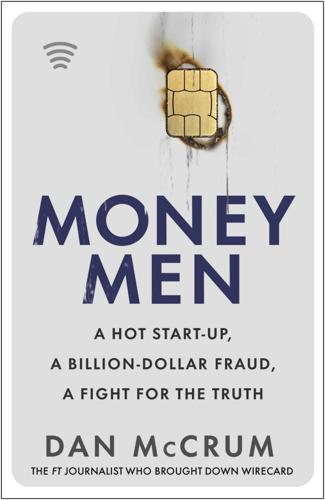
Money Men: A Hot Startup, a Billion Dollar Fraud, a Fight for the Truth
by
Dan McCrum
Published 15 Jun 2022
There had always been some ambiguity about which part of the conglomerate was making the investment; was it for the benefit of the group, or for clients of the Vision Fund? As it would turn out (revealed by Paul Davies at the Wall Street Journal) it was neither. The SoftBank group and the Vision Fund both declined to invest. So instead it was offered to SoftBank senior staff, and an Abu Dhabi sovereign wealth fund called Mubadala that was deeply enmeshed in the Vision Fund. To them the easy money was as tempting as a Louis Vuitton bag left by the side of the road, and they snapped it up. SoftBank’s involvement was to manage the juicy Wirecard investment on their behalf, earning a share of the profits.
…
Everything was up for grabs and no industry was safe from reimagination. The sums available to start-ups had been transformed, along with the language. Private companies valued at a billion dollars or more were now ‘Unicorns’, and chasing these magical creatures was an industry. SoftBank, a Japanese conglomerate, announced the launch of a $100bn Vision Fund to throw at private companies like the taxi group Uber and the office space provider WeWork based on fantasies of world domination. In the stock market, Wirecard caught the eye. Its numbers were great, but more than that it was global, it was at the forefront of payments processing. In March it had announced a second deal with Citigroup designed to make Wirecard a household name across Asia.
…
At headquarters Braun focused on public relations, judging by his email traffic, tweaking press releases and demanding fresh material for his Twitter feed. That April, however, he had a much more important task: convincing some of the world’s most powerful investors that he didn’t want or need their money. He had been approached by SoftBank, the Japanese conglomerate whose €100bn Vision Fund had transformed technology investing mainly by raising the table stakes for everyone involved. It doled out billions to chosen companies like WeWork, encouraging them to use the money to smash the competition. A former Deutsche Bank trader called Akshay Naheta, now an investor at SoftBank, smelled an opportunity at Wirecard.
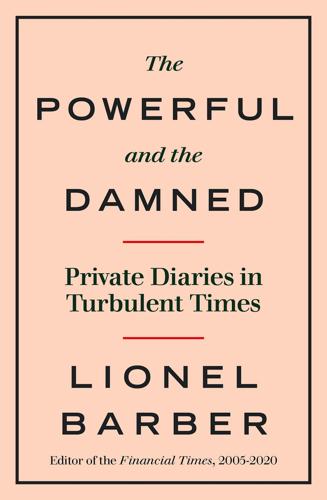
The Powerful and the Damned: Private Diaries in Turbulent Times
by
Lionel Barber
Published 5 Nov 2020
‘I sleep very soundly,’ Cameron replies. Not entirely convincingly. MONDAY, 23 APRIL Rajeev Misra arrives with his team from the Softbank Vision Fund, bearing slides and sales pitches. Misra is a former Deutsche Bank trader and top executive who would make P.T. Barnum blush. Among the Vision Fund’s top investments are WeWork, the office-space leasing company; Flipkart, India’s answer to Amazon; and a dog-walking start-up called Wag into which the Vision Fund has pumped an agreed $300m. SoftBank’s Vision Fund reportedly raised $100bn, thanks in part to Saudi money and the personal backing of MBS. They were the new power in the world’s venture capital market, able to amass and deploy funds so colossal that they ended up distorting the whole VC market.
…
The scale of his ambition to modernise the oil-dependent state was breathtaking, but at this point it was hard to gauge how much was rhetoric and how much an achievable plan for action. He told us he had spent $1bn on management consultants alone, a foretaste of the extraordinary sums he was willing to spend on high-technology investments through his Japanese partner, the SoftBank Vision Fund. We skirted his plans for the partial privatisation of Saudi Aramco, having been given a steer that it was on the cards in a private conversation with the veteran Saudi oil minister Ali al-Naimi. More disturbing were dark hints about opposition to his modernisation plans within Saudi Arabia. The prince appeared to display a ruthlessness worthy of a young Bashar al-Assad, another moderniser in his early years.
…
Son talks in vague terms about an epochal change coming with ‘the internet of things’, which explains why SoftBank has just snapped up Arm, one of Britain’s few remaining world-class technology companies. Arm, which makes advanced semiconductor chips, will play a central role in the next wave of technological changes, says Son.fn3 Memo to the editor: the FT must fix a Lunch with the FT with this man. Masa Son’s $100bn SoftBank Vision Fund, backed by Mohammed bin Salman, soon turned the venture capital market upside down. Despite repeated promises, and a handshake in the presence of Google CEO Larry Page, Masa Son evaded Lunch with the FT. He understood that his power – or at least a good portion – lay in his mystique. Hence no formal interviews.

The Future Is Faster Than You Think: How Converging Technologies Are Transforming Business, Industries, and Our Lives
by
Peter H. Diamandis
and
Steven Kotler
Published 28 Jan 2020
“Forty-five minutes, $45 billion,” Son later said on The David Rubenstein Show. “One billion dollars per minute.” Quickly thereafter, companies like Apple, Foxconn, and Qualcomm joined in. And that only brings us to today. According to Son, the $100 billion Vision Fund is just “the first step.” He’s already announced that he’s working to establish a second Vision Fund in the next few years. “We will briskly expand the scale. Vision Funds 2, 3 and 4 will be established every two to three years. We are creating a mechanism to increase our funding ability from 10 trillion yen to 20 trillion yen to 100 trillion yen.” Any way you slice it, that’s a lot of yen.
…
And this pales beside Softbank CEO Masayoshi Son’s mega-fund, the “Vision Fund.” Driven by his belief in the “Singularity”—Ray Kurzweil’s idea that developments in AI will lead to unprecedented technological growth and unfathomable changes for civilization—Son decided to try to accelerate this process. “I totally believe [in] this concept,” he said in a recent speech. “In next thirty years, this will become a reality. I truly believe it’s coming, that’s why I’m in a hurry—to aggregate the cash, to invest.” And aggregate cash is what he did. The Vision Fund got started in September 2016, when Mohammed bin Salman, then the deputy crown prince of Saudi Arabia, flew to Tokyo in search of ways to diversify his country’s oil-dominated investment portfolio.
…
“I totally believe [in] this concept,”: Sam Shead, “The Japanese Tech Billionaire Behind Softbank Thinks the ‘Singularity’ Will Occur Within 30 Years,” Business Insider, February 27, 2017. See: https://www.businessinsider.com/softbank-ceo-masayoshi-son-thinks-singularity-will-occur-within-30-years-2017-2. The Vision Fund got started: “Masayoshi Son Prepares to Unleash His Second $100bn Tech Fund,” Economist, March 23, 2019. See: https://www.economist.com/business/2019/03/23/masayoshi-son-prepares-to-unleash-his-second-100bn-tech-fund. Force #3: Demonetization Ilumina’s latest generation sequencer: Sarah Buhr, “Illumina Wants to Sequence Your Whole Genome for $100,” TechCrunch, January 10, 2017.
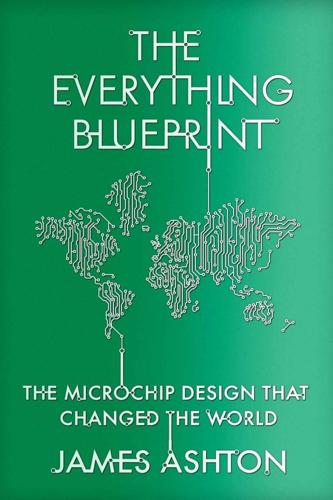
The Everything Blueprint: The Microchip Design That Changed the World
by
James Ashton
Published 11 May 2023
SoftBank also transferred a 25 per cent stake in Arm into the fund, which seemingly enabled it to lessen its tax bill in Japan. It also started the clock. The Vision Fund had a 12-year horizon, 288 years fewer than Son’s own vaunted vision. At some point investors would want their money back – with interest. In July 2019, a second and larger fund, focused on the field of artificial intelligence, was announced. Based on a series of memoranda of understandings signed with backers including Apple, Microsoft, the Chinese iPhone maker Foxconn and Kazakhstan’s sovereign wealth fund, expected contributions to the SoftBank Vision Fund 2 stood at an eye-watering $108bn. But an embarrassing flameout was already in train.
…
Two weeks later, SoftBank reported a $6.5bn quarterly loss – its first in 14 years – after writing down the value of several of its investments. ‘My investment judgment was poor in many ways and I am reflecting deeply on that,’ Son said.4 Troubles with the first Vision Fund made investors jittery about the second one. Despite the raft of pledges to Vision Fund 2, only SoftBank committed. Hopes of a $108bn pot disintegrated as the high-flying company fell to earth. Yutaka Matsuo, a professor at the University of Tokyo’s graduate school of engineering who became a director of SoftBank in June 2019, reflected that his first year on the board had been ‘quite a roller coaster ride’ and that the Sōzō Summit ‘represented the pinnacle’.
…
‘Obviously from your experience, my experience, the failures teach us more,’ he said.1 The tech guru appeared to be on top of the world. Three years on from acquiring British chip designer Arm, Son had barely stopped spending. Less than six weeks after that lightning-quick deal had closed, SoftBank raised the stakes, announcing the formation of its Vision Fund to invest at least $25bn in technology over the next five years. With a potential size of $100bn, it would ‘aim to be one of the world’s largest of its kind’, SoftBank said. Even with Son’s deep pockets, he needed to tap wealthy friends. Up to $45bn was contributed by the Public Investment Fund (PIF) of Saudi Arabia, which was eager to diversify its economy away from oil.
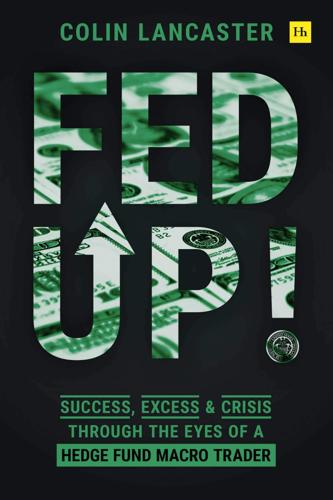
Fed Up!: Success, Excess and Crisis Through the Eyes of a Hedge Fund Macro Trader
by
Colin Lancaster
Published 3 May 2021
SoftBank is based in Tokyo. I log into my computer and see the Rabbi is already online. He loves these calls. Wow. Earnings are a disaster. Vision Fund lost close to $18 billion in the most recent fiscal year, triggering the worst loss ever for the Japanese company. SoftBank had to write down the valuations of the big unicorns it owned. WeWork’s value has fallen by 95% this year. Masa Son concedes he’s unlikely to draw outside investors for another Vision Fund, an initiative he once proclaimed as the future of SoftBank as it moved away from the telecom business. About fifteen of the fund’s start-ups will likely go bankrupt, he says.
…
This is labelled “The Valley of Coronavirus.” Only one unicorn looks as if it has made it out of the valley and back up the mountain. “If I were to describe it,” Masa Son tells his online audience, “unicorns that had been climbing uphill hard are suddenly faced with a coronavirus valley, and they are falling into that valley.” “Vision Fund’s results are not something to be proud of,” he says. “If the results are bad, you can’t raise money from investors. Things aren’t good.” Neumann, the WeWork CEO whom Jerry liked to stalk, will be keeping busy with his lawsuit against SoftBank. He sued the bank for scrapping the bailout, which had included a plan to buy $3 billion worth of stock from Neumann and other shareholders.
…
He sued the bank for scrapping the bailout, which had included a plan to buy $3 billion worth of stock from Neumann and other shareholders. But the bank scrapped the deal, claiming WeWork hadn’t met the conditions of the contract and citing legal inquiries by the US Department of Justice (DOJ) and the SEC. According to The Guardian newspaper, reporting on this latest lawsuit, “Mr. Neumann put his trust in [SoftBank and SoftBank’s Vision Fund] to be stewards of WeWork, which he and thousands of others had worked so hard to build,” only to be met with “brazen” abuses. It just goes to show that lots of things end really badly when a bubble starts to pop. I close down my computer and go back to bed for a few hours. * Lifecoach says she wants to play beer pong.

The Power Law: Venture Capital and the Making of the New Future
by
Sebastian Mallaby
Published 1 Feb 2022
It was ironic that Filo’s professional mission was to bring order to cyberspace.[17] Embarrassed by the state of their office, Yang and Filo offered to take their visitor out to a French restaurant. Son waved the idea away. He wanted to get down to business. In his later career, Son acquired a reputation for raising and committing funds extraordinarily quickly. In 2016, when he was plotting an investment vehicle called the Vision Fund, he talked $45 billion out of Saudi Arabia’s crown prince in the space of forty-five minutes.[18] Now, as he encountered Yahoo, his approach was similarly direct. He wanted a piece of Yahoo. His hosts wanted his capital. There was no need to complicate the conversation. Son invited Filo and Yang to say what they thought Yahoo might be worth.
…
Indeed, far from kowtowing to Benchmark, Neumann was about to link arms with the ultimate enabler. The enabler was Masayoshi Son, now busy with his second charge into a U.S. technology bull market. In 2016, in a burst of inspired salesmanship, Son had talked $60 billion out of Saudi Arabia and Abu Dhabi; the following year he launched what he called his Vision Fund and went out to hunt for unicorns. Son’s war chest, which ultimately weighed in at $98.6 billion, was more than thirty times larger than the biggest venture fund to date, and Son calculated that its sheer size would give him an edge.[23] Back in the 1990s, the ability to write a $100 million check had allowed him to muscle Yahoo.
…
SoftBank insiders seem unsure how much that promise cost. However, the $58 billion payout makes it safe to say that this was the greatest venture bet ever. BACK TO NOTE REFERENCE 26 Son’s Alibaba coup did not protect him from another round of disgrace in 2019–2020, when huge and hasty bets made through his Vision Fund turned sour. BACK TO NOTE REFERENCE 27 The claims of preferred stock holders come before those of common stock holders in bankruptcy, and preferred stock can confer protection against ownership dilution when the company raises more capital. BACK TO NOTE REFERENCE 28 Shirley Lin of Goldman Sachs was among the western investors who pushed for the novel legal structure.

Super Pumped: The Battle for Uber
by
Mike Isaac
Published 2 Sep 2019
By 2017, SoftBank had been making serious turbulence in Silicon Valley by slinging money from the “Vision Fund,” an enormous $100-billion pool of capital formed by the Public Investment Fund of Saudi Arabia, the Abu Dhabi Investment Authority, Apple, Qualcomm, and SoftBank itself, along with a few others. Masa’s mandate was simple: by focusing the fund on technology investments—something he had done practically his entire career—SoftBank would finance the global tech infrastructure that would undergird the future. He designed the investment vehicle for speed; Vision Fund was required to invest all of its capital within five years of its closing date.
…
Twitter, July 27, 2017, 10:05 p.m., https://twitter.com/megwhitman/status/890754932990763008. 315 the firm filed a lawsuit: Mike Isaac, “Uber Investor Sues Travis Kalanick for Fraud,” New York Times, August 10, 2017, https://www.nytimes.com/2017/08/10/technology/travis-kalanick-uber-lawsuit-benchmark-capital.html. 315 “We do not feel it was either prudent”: Mike Isaac, “Kalanick Loyalists Move to Force Benchmark Off Uber’s Board,” New York Times, August 11, 2017, https://www.nytimes.com/2017/08/11/technology/uber-benchmark-pishevar.html. 317 He bankrolled his college years: Cyrus Farivar, “How Sprint’s New Boss Lost $70 Billion of His Own Cash (and Still Stayed Rich),” Ars Technica, October 16, 2012, https://arstechnica.com/information-technology/2012/10/how-sprints-new-boss-lost-70-billion-of-his-own-cash-and-still-stayed-rich/. 317 He returned to Japan: Andrew Ross Sorkin, “A Key Figure in the Future of Yahoo,” Dealbook, New York Times, December 13, 2010, https://dealbook.nytimes.com/2010/12/13/a-key-figure-in-the-future-of-yahoo/. 317 “crazy guy who bet on the future”: Walter Sim, “SoftBank’s Masayoshi Son, the ‘Crazy Guy Who Bet on the Future,’ ” Straits Times, December 12, 2016, https://www.straitstimes.com/asia/east-asia/softbanks-masayoshi-son-the-crazy-guy-who-bet-on-the-future. 317 He designed the investment vehicle for speed: Dana Olsen, “Vision Fund 101: Inside SoftBank’s $98B Vehicle,” PitchBook, August 2, 2017, https://pitchbook.com/news/articles/vision-fund-101-inside-softbanks-93b-vehicle. Chapter 31: THE GRAND BARGAIN 319 The storied corporation had lost: Steve Blank, “Why GE’s Jeff Immelt Lost His Job: Disruption and Activist Investors,” Harvard Business Review, October 30, 2017, https://hbr.org/2017/10/why-ges-jeff-immelt-lost-his-job-disruption-and-activist-investors. 320 “There’s this chip you have”: Sheelah Kolhatkar, “At Uber, A New C.E.O.
…
See also Uber becomes Uber, 63 rollout of, 59–63 Uber Cap Bill, 116, 116n Uber Eats, 338 Uberettos, 3, 3n, 7, 10 UberPeople.net, 248 “Uberpool,” 120 “Uber Super Duper,” 184 UberX, xv, 82–83, 87, 112, 114, 227, 244, 245, 250–51 UCLA, 20–22 University of California, Berkeley, 107 University of Florida at Gainesville, 66–67 University of Pennsylvania, 214–15 University of Texas at Austin, 67 Urmson, Chris, 110 US Department of Justice, 247 US Postal Service, 231n Utah, 246 VanderZanden, Travis, 188 Vanity Fair, 126, 163n, 230 VentureBeat, 55 Violation of Terms of Service (VTOS) playbook, 246 Virgin America, 93 Vishria, Eric, 283, 294 “Vision Fund,” 317–18 Von Furstenberg, Diane, 307–8 Voytek, Bradley, 136 Wahlberg, Mark, 286n Wall Street Journal, 55, 131, 199, 332 Walmart, 115 The Walt Disney Company, 23 Washington, DC, 84, 144 Waverly Inn, 126–28 Waymo, 233–35, 236, 255–56, 338–39 Webvan, 26 WeChat, 147–48 Weiner, Mark, 115 Weinstein, Harvey, 241 Wellington Capital Group, 300 Wells Fargo, 33 West, Tony, 332, 335–36 Westchester, New York, 93, 94 WeWork, 4 WhatsApp, 257, 295, 303 Whetstone, Rachel, 6, 224–25, 237, 239, 240, 252, 260, 262, 337 Whitman, Meg, 311–13, 311n, 314, 319, 320, 321, 322–25 W Hotel, 79 Wickr, 258 Wilson Sonsini Goodrich & Rosati, 100 Windows, 37 Winfrey, Oprah, 193–94, 227 WIRED, 9, 26, 333 Wolf, Charlie, 67 Wolff, Michael, 128, 129, 129n Woodside, California, 64 “Workation,” 187–88 World Economic Forum, 31 Wozniak, Steve “Woz,” 39 Wuhan, China, 142 Xchange leasing program, 218–19 Xi Jinping, 141 Xooglers, 182 XS, 7 “X to the x” celebration, 1–8, 242 Yadav, Shiv Kumar, 149–50 Yarnell, Arizona, 213 Yoo, Salle, 124, 244–45, 310 You, Angie, 32, 264 YouTube, 96, 199 Yucaipa Companies, 23 Zalanick, Travis, 129n Zappos, 92n Zillow, 65 Zimmer, John, 85, 86, 88–89, 120, 132, 186, 187, 188, 189, 211 Zimride, 85–86 Zuckerberg, Mark, 9, 21–22, 34, 45, 74, 121, 165, 171, 199 China and, 140, 202 influence of, 77, 77n purchases Instagram, 96–97 Sandberg and, 239n warns Kalanick to keep an eye on Sidecar, 86 Zynga, 77
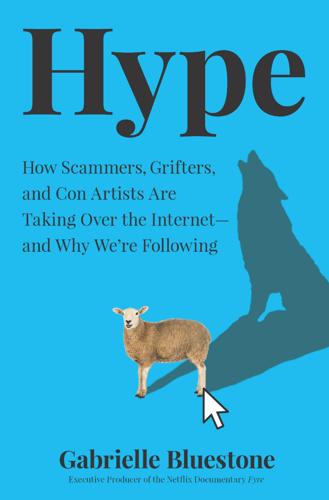
Hype: How Scammers, Grifters, and Con Artists Are Taking Over the Internet―and Why We're Following
by
Gabrielle Bluestone
Published 5 Apr 2021
He’s probably done more to inflate the Silicon Valley bubble than anyone else, but after losing a fortune twice and gaining it back three times, he’s still making big bets that any company he takes a shine to can end up owning a sector thanks to the sheer amount of cash he pumps into it. Even so, it turns out he’s also using other people’s money to achieve great wealth. These days, most of Son’s investing is done through the Vision Fund, a $100 billion technology-focused venture capital fund that derives a large percentage of its capital from Saudi Arabia. “If a founder asked the Vision Fund for $40 million, Mr. Son might ask, ‘What would you do with $400 million?’” the New York Times reported.78 A senior executive reportedly told the paper, “Masa has his own style and others might choke, but Adam would be like, ‘$400 million?
…
“What he did was he reset the market price for valuations because he had more cash to deploy than anybody else. But everyone calls the Vision Fund $100 billion fund. It’s not a $100 billion fund. It’s $40 billion worth of equity, $60 billion worth of debt, and then $60 billion worth of debt as a 7 percent interest rate. It’s a $30 billion fund that could run for eight years based on the interest cost and only repay the equity portion of the fund that was raised,” Wells said. “Does that make sense? It’s completely insane, this model that he did, and of course he was trying to go raise the second Vision Fund off of the strength of the markup and valuations at WeWork that he was providing in order for a justification to go raise another fund.

The Quiet Coup: Neoliberalism and the Looting of America
by
Mehrsa Baradaran
Published 7 May 2024
Our modern visionaries at the edge of the market frontier, however, reveal a rather grim and limited vision for humanity’s future. The $154 billion Vision Fund, WeWork’s angel investor, is illustrative. It was started by Masayoshi Son, the founder and CEO of the multinational conglomerate SoftBank. Vision Fund’s mission, as stated in its marketing documents, is to spread “happiness to everyone” and to “increase people’s joy.” The initial $100 billion investment in the Vision Fund came from Mohammad bin Salman, the tech-friendly Saudi known as MBS who is the de facto ruler of one of the most unequal countries in the world and whose $1.4 trillion of oil wealth is invested in several tech unicorns.
…
The initial $100 billion investment in the Vision Fund came from Mohammad bin Salman, the tech-friendly Saudi known as MBS who is the de facto ruler of one of the most unequal countries in the world and whose $1.4 trillion of oil wealth is invested in several tech unicorns. Although foreign migrants toil under coercive labor arrangements akin to debt slavery and live in slumlike conditions in Saudi Arabia, the royal family’s wealth is converted into “joy-spreading” visions of humanity’s future. The Vision Fund’s portfolio of happiness-spreading investments are made up of a variety of tech firms specializing in AI, fintech, or e-commerce whose business is profit making but whose marketing promises are much loftier. These include: Kabbage, an AI-based lender with “core values” including Care Deeply, Inspire Innovation, Win, Stay Connected, Unconditional Commitment, and lastly, Create Holy Shit Moments Uber, the golden egg, whose more modest mission is “We ignite opportunity by setting the world in motion” DoorDash, which describes its delivery service app as “just the beginning of connecting people with possibility—easier evenings, happier days, bigger savings accounts, wider nets and stronger communities” Opendoor, a real estate broker intending “to empower everyone with the freedom to move” Zymergen, a biotech company that is “reimagining the world” through “a combination of Darwinian selection of genetically engineered microbes combined with machine learning, analysis and automation” Not all of these start-ups will survive, but those that do will do so by prospecting new terrain for extraction.
…
Steel, 88–89, 271–72 “Uses and Abuses of ‘Neoliberalism, The” (online forum), xl usury (usury laws), 189, 195–202, 205–9, 213, 215, 217, 244, 275, 365 Utah, 213 utility (utility maximization), 162–63, 166, 171, 174, 176, 187 vaccines, 38, 341 value, 361–62 Vanderbilt, Cornelius, 198, 328 Vedic texts, 196 Venezuela, 47 venture capital, 323–24, 326, 327, 345, 363 venture capital funds, 336–37, 361 Vermont, 108 Versailles Peace Conference, xv Vienna, Austria, 42, 49 Vietnam War, 25, 61, 62, 77, 102. See also antiwar movement Village of Euclid v. Ambler Realty Co., 122 Viniar, David, 311 violence, 5, 9, 11, 21, 34, 41–42 Virginia, 86, 104–6, 108, 117, 145, 225 Virginia State Board of Pharmacy v. Virginia Citizens Consumer Council, Inc., 106–8, 111–14, 149, 207 Vision Fund, 325–26 Volcker, Paul, 62, 302, 303 Volker, William, 91 voodoo economics, 231 voting rights, xxiii, 102, 174 Voting Rights Act (1965), 5, 7, 221 vouchers, school, 186 vulture capitalists, 245, 300 wage and price controls, 62 wages (wage labor), 15–16, 19, 53, 58, 64, 103, 193, 214, 215, 272.
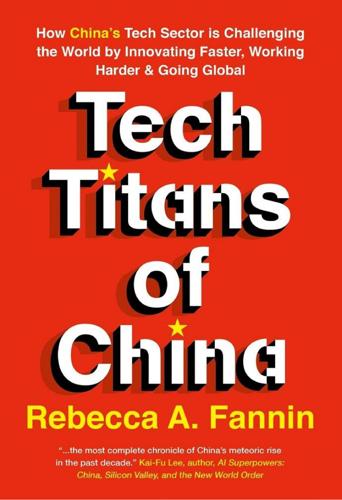
Tech Titans of China: How China's Tech Sector Is Challenging the World by Innovating Faster, Working Harder, and Going Global
by
Rebecca Fannin
Published 2 Sep 2019
People’s Republic of China, “13th Five-Year Plan on National Economic and Social Development,” March 17, 2016. Translation; http://en.ndrc.gov.cn/newsrelease/201612/P020161207645765233498.pdf. 9. “China’s New $15 Billion Tech Fund Emulates SoftBank’s Vision Fund, The Economist, July 5, 2018; economist.com/business/2018/07/05/chinas-new-15bn-tech-fund-emulates-softbanks-vision-fund. 10. Defense Innovation Unit Experimental (DiuX), China’s Technology Transfer Strategy, January 2018; admin.govexec.com/media/diux_chinatechnologytransferstudy_jan_2018_(1).pdf. 11. “Global Venture Capital Trends, Analysis of 2010–2018 Data, London-Based Alternative Assets,” Preqin.
…
The startup has collected $1.6 billion in venture capital, most recently $620 million in May 2018 at a valuation of more than $4.5 billion from several prominent firms including Silver Lake, Fidelity International, and Tiger Global. Just two months before, SenseTime pulled in $600 million led by Alibaba—its largest shareholder—with Singapore’s state investment firm, Temasek. The year before, SenseTime reeled in $410 million led by private equity firm CDH Investments and earlier backer IDG Capital. The huge SoftBank Vision Fund could be next to fund SenseTime. University Spinout Does Good SenseTime grew out of the computer vision lab at the Chinese University of Hong Kong, led by Professor Tang Xiaoou along with a group of students who developed facial recognition algorithms that had higher accuracy rates than human eyes.
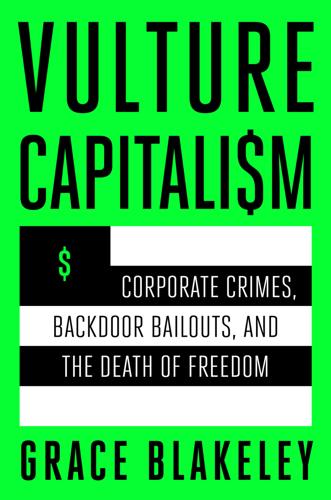
Vulture Capitalism: Corporate Crimes, Backdoor Bailouts, and the Death of Freedom
by
Grace Blakeley
Published 11 Mar 2024
“Who Has Lost the Most Money in Human History?,” The Spectator, November 19, 2022, https://www.spectator.co.uk/article/who-has-lost-the-most-money-in-human-history/. 9. Alex Konrad, “WeWork Confirms Massive $4.4 Billion Investment From SoftBank and Its Vision Fund,” Forbes, August 24, 2017, https://www.forbes.com/sites/alexkonrad/2017/08/24/wework-confirms-massive-4-4-billion-investment-from-softbank-and-its-vision-fund/. 10. Amy Chozick, “Adam Neumann and the Art of Failing Up,” New York Times, November 2, 2019, updated May 18, 2020, https://www.nytimes.com/2019/11/02/business/adam-neumann-wework-exit-package.html. 11. Ibid. 12.
…
Ortenca Aliaj and George Hammond, “WeWork to Make Belated Arrival on Stock Market after Spac Merger,” Financial Times, October 19, 2021, https://www.ft.com/content/258121b8-299e-4993-91d9-cb2a18d387f4. 25. Pavel Alpeyev, “SoftBank’s Vision Fund Loses $17.7 Billion on WeWork, Uber,” Bloomberg, May 18, 2020, https://www.bloomberg.com/news/articles/2020-05-18/softbank-vision-fund-books-17-7-billion-loss-on-wework-uber. 26. Hyman P. Minsky, Induced Investment and Business Cycles (New York: Levy Economics Institute of Bard College, 2004); Karl Polanyi, The Great Transformation: The Political and Economic Origins of Our Time (Boston: Beacon Press, 2001). 27.

Blockchain Chicken Farm: And Other Stories of Tech in China's Countryside
by
Xiaowei Wang
Published 12 Oct 2020
For all the attention the Chinese Great Firewall receives in blocking Twitter and YouTube, Alibaba’s Aliyun offers a way to bypass the Great Firewall, for a fee. Other well-known surveillance companies such as Hikvision and SenseTime have a slew of foreign investment. SenseTime’s investors include Qualcomm, Fidelity International, Silver Lake Partners (based in Menlo Park, California), and Japan’s SoftBank Vision Fund. SoftBank’s Vision Fund has ties to Saudi wealth, and spans the globe in its international influence—investing in companies from Alibaba to WeWork and Slack. In one corner of the Megvii showroom is a display about Meitu, the beauty and cosmetics app with which you can quickly edit your selfies. The commercial is cheerful: a woman gives herself bunny ears, some blush, and lipstick.
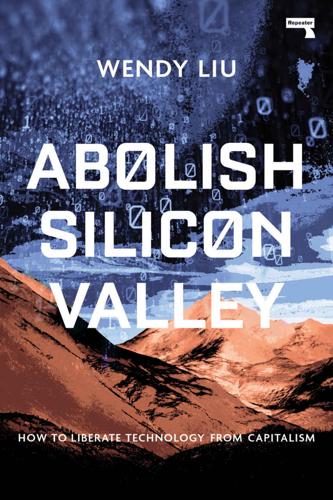
Abolish Silicon Valley: How to Liberate Technology From Capitalism
by
Wendy Liu
Published 22 Mar 2020
See, for example, “Lime, A Scooter Startup That Barely Existed Two Years Ago, Now Going To Be Worth $2 billion” by Theodore Schleifer for Vox, published January 15, 2019, at https://www.vox.com/2019/1/15/18184756/lime-scooter-fundraising-valuation-two-billion. 6 I’m mostly referring to the SoftBank Vision Fund, which has poured incredible amounts of money into companies like the gloriously overvalued (and still unprofitable) WeWork, but SoftBank is only the most egregious example of the trend. For an overview of SoftBank’s recent financial difficulties, see “SoftBank’s Blurry Vision” by Alexander Salmon for The American Prospect, published October 11, 2019 at https://prospect.org/power/softbanks-blurry-vision-fund-tech-ipos/. 7 Scott Kapor’s Secrets of Sand Hill Road (Portfolio, 2019) has a good breakdown of this, though an uncritical one. 8 The two American universities with the largest endowments are Harvard and Yale.
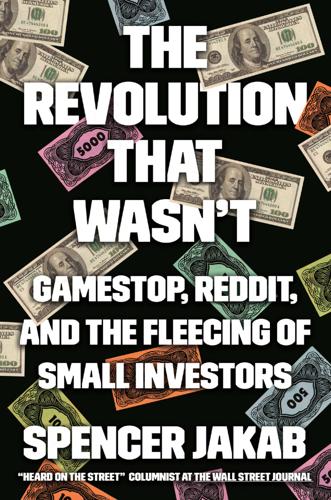
The Revolution That Wasn't: GameStop, Reddit, and the Fleecing of Small Investors
by
Spencer Jakab
Published 1 Feb 2022
From June through August, the Nasdaq Composite had a strong rally, rising by 24 percent, and the big tech stocks that led the charge did even better than that. That wasn’t mere good luck, though, because the whale’s gamble was even bigger than believed. By early September it emerged that the buyer was Japan’s SoftBank Corp., led by the risk-loving billionaire Masayoshi Son. Reporters also learned that his $100 billion Vision Fund had simultaneously purchased billions of dollars of many of the underlying tech stocks. At face value that just sounds like two gigantic bets instead of one. There was a method to Son’s madness, though. As with short selling, options dealers are taking on a theoretically unlimited risk by transacting with you, and they aren’t in the risk-taking business.
…
F., 31 Slate, 175 smartphone apps, 26 smartphone trading apps, x, xi, 1, 21–25, 36, 41, 53, 87, 102, 208, 236, 247, 251, 257–58 Doji, 47 social media and, 36 see also Robinhood Smith, Ben, 19 Snoop Dogg, 24 Social Capital, 152 Social Identity and Morality Lab, 20 Social Leverage, 24 social media, x, 1, 4, 6, 11, 12, 18–20, 21–25, 41, 57, 107, 135, 137, 141, 154–56, 159, 162, 163, 167, 176, 179–80, 182, 188, 189, 193, 194, 195, 199, 200, 243, 247, 253 advertisers and, 202 bots on, 163–66 Facebook, 37–38, 98, 162, 166, 202 harassment on, 39, 122, 125 peers and, 35–36, 142–44 Reddit, see Reddit smartphone trading apps and, 36 TikTok, 18, 37, 107, 131, 162–63 Twitter, see Twitter YouTube, see YouTube Social Network, The, 38 social proof, 142–44 social reality, 36 SoFi, 27, 56, 57, 158 SoftBank Corp., 105–7, 109 Sohn Investment Conference, 111, 253 Solomon, David, 220 Son, Masayoshi, 105, 106 Sony, 93 Soros, George, 183 SPACs (special purpose acquisition companies; blank check firms), 64–65, 155, 158, 164, 178, 194, 246, 247 sports betting, 26, 30–31, 57 sports team ownership, 8, 111, 158, 246 Stanford University, 25 Center on Longevity, 71 Stein, Jon, 193, 242, 261 Stern School of Business, 82 S3 Partners, 76, 81, 130, 133, 170, 217 stimulus checks, 56, 62, 71, 72, 255 Stocklemon, 118 stock market crash of 1929, 42, 150, 233 stock market crash of 1987, 10, 70 stock market prices and valuation, 173, 178–81, 185 Stocktwits, 24, 176 stonks, 173, 175–78, 181, 185, 209 Stratton Oakmont, Inc., 118 student loans, xi, 62 Summer, Donna, 9 Sundheim, Daniel, 8 Super Bowl, 19 Super Bowl ads Reddit, 12 Robinhood, 28, 30, 200 Supreme Court, 26 Survey of Consumer Finances, 252 Swedroe, Larry, 62, 66, 238, 247 Szymczak, Kayana, 171–72 T Tabb, Larry, 33–34 Taleb, Nassim Nicholas, 5 taxes, 66–67 TD Ameritrade, 25, 51, 139, 188 technologies, 155 defense of, 40–41 tech stocks, 59, 76, 84, 92, 104–5 Tenev, Vladimir, 30, 49, 67, 89, 161, 183, 187, 194, 197, 200, 201, 204–6, 210, 219, 234, 240 at congressional hearing, 3–6, 11, 14, 32, 40, 65, 206 Robinhood cofounded by, 3, 23–25, 90 Tesla, Nikola, 64 Tesla Motors, 15, 50, 52, 64, 81–82, 91, 92, 98, 103, 105–7, 120, 124, 149, 152, 164, 259 Thaler, Richard, 31 TheStreet, 128 3Com, 84 TikTok, 18, 37, 107, 131, 162–63 Tillinghast, Joel, 221–22 Tinder, 24, 122 Tongji Medical, 60, 161–62 TopStonks.com, 94 trading apps, see smartphone trading apps trading commissions, see commissions “Trading Is Hazardous to Your Wealth” (Barber and Odean), 235 Trading Places, xiv, xv “trading sardines” parable, 184–85 Treasury notes, 58 Trump, Donald, 13, 70 Trump, Donald, Jr., 197 Trust Index, 143 Twitter, 11, 19, 24, 37, 39, 57, 88, 135, 152–54, 157–58, 161–63, 166, 172, 177, 187, 202 Gill’s Forrest Gump post on, 212 Musk’s use of, x, 60, 82, 83, 124, 144, 152–54, 161, 170 SEC and, 167–68 two-day period to settle trades, 204 U Uber, 105 unemployment, 71, 151 Ursus, 85 utilitarian products, 51 V Valeant Pharmaceuticals, 116–17, 120, 125 Van Bavel, Jay, 20, 36 VandaTrack, 139 VanEck, 158–59 Vanguard Group, 8, 32, 254, 257, 259 venture capitalists, 24 Vergara, Salvador, 172–73 Verlaine, Julia-Ambra, 171 Versailles, 9 Virtu Financial, 49, 55, 178, 202, 207, 218 Vision Fund, 105 Volcker Rule, 42 Volkswagen, 77–78, 81 Vrabeck, Kathy, 114, 223 W WallStreetBets, ix–x, xii, xiv, 2, 4, 8, 11, 14, 15, 16, 19, 22–23, 36, 38–40, 43–47, 55, 57, 67, 69, 75–77, 88, 92–95, 97–99, 107, 111, 113, 115, 120, 122, 127–32, 135, 138, 145, 147–49, 152, 157, 159–61, 170–72, 181–82, 188, 190, 192, 193, 205, 213, 216–17, 220–22, 227, 229–31, 238, 243, 255, 259 AMC and, 225–26 “apes together strong” and, 135–36 bots on, 163–66 BTFD on, 69 DeepFuckingValue on, see Gill, Keith as hedge fund, 139 Jeffamazon on, 107–9 Kronos_415 on, 103, 107 Left and, 121–23, 126, 129, 130, 133, 136, 238 membership demographics of, 57 MoonYachts on, 97–98 number of members of, xi, 46, 136–38, 190, 199, 213, 229 Player896 on, 93, 109 proof of trade on, 47 racial slurs on, 190 Robinhood and, 22–23 Senior_Hedgehog on, 72, 73, 76, 79, 92 sharing of losses on, 144 Stonksflyingup on, 95, 109 taken off-line, 190 WeLikeTheStock and, 126, 242 see also GameStop, GameStop short squeeze Wall Street Journal, ix, 30, 50, 52, 61, 84, 118, 128–29, 132, 136, 152, 171, 179, 180, 210, 211, 223, 250, 253 Wall Street Week, 156 Walmart, 26 Wanda, Dalian, 225 Wang Jianlin, 225 warrants, 101 Washington Post, The, 161 Waters, Maxine, 3, 13, 64–65, 76 Wealthfront, 27, 257 wealthiest Americans, 234 wealth inequality, xi, 14, 71–72, 160, 182 Webull, 178, 200 Weissmann, Jordan, 175–76 WeLikeTheStock, 126, 242 West, Jack, 172 Western Digital, 46 WeWork, 105 When Genius Failed (Lowenstein), 260 Where Are the Customers’ Yachts?

The Future Is Asian
by
Parag Khanna
Published 5 Feb 2019
According to Rakuten founder Hiroshi Mikitani, “The greatest business risk [Japan] faces is that of staying at home.”20 Japan is invigorating its already deep advantages in precision industries through new public-private alliances amounting to several trillion dollars devoted to the Internet of Things (IoT), big data, AI, 3D printing, robotics, biotech, health care, clean energy, enhanced agriculture, and other sectors—all ready for export to Asia’s high-growth markets. SoftBank has become Japan’s standout example of a bridge between Japan, Asia, and the world. SoftBank’s Vision Funds—in which Saudi Arabia is the largest investor followed by the UAE—are the largest technology portfolio in the world, making aggressive investments in semiconductors, satellites, artificial intelligence, and IoT companies around the world. SoftBank also has stakes in e-commerce companies in India and a nearly 30 percent stake in China’s Alibaba.
…
This has attracted the global private equity (PE) industry to Asia, which has already surpassed Europe as the second largest destination for private equity (just behind the United States), with one-fourth of all global PE capital devoted to the region.26 Four of the world’s largest PE funds are Asian—SoftBank’s Vision Funds in Japan, China State-Owned Capital Venture Investment Fund, the Sino-Singapore Connectivity Private Equity Fund Management Company, and the China Internet Investment Fund—each with $100 billion–plus in capital to deploy. Baring Private Equity Asia (BPEA) is the regional veteran and the largest Asian PE fund fully based in Asia, with forty companies in its portfolio.
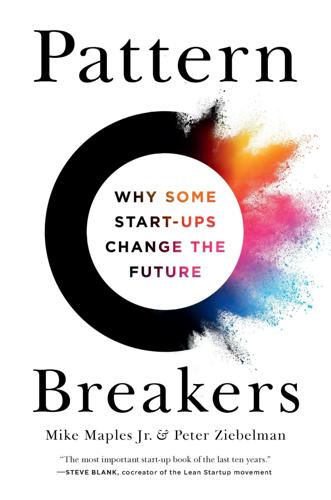
Pattern Breakers: Why Some Start-Ups Change the Future
by
Mike Maples
and
Peter Ziebelman
Published 8 Jul 2024
Microsoft was building the Microsoft Network (MSN) and echoed AOL’s approach of a “walled garden.” They aimed to create, curate, and control the content flowing through their networks. Their consumer software and PC market dominance cast them as strong contenders. Some thought that perhaps the government should take it on. After all, DARPA’s vision, funding, and research had already laid the foundational technologies and protocols that would beget the internet.1 One could draw an analogy to how, in the second half of the twentieth century, the government had successfully laid the concrete interstate highways that changed how Americans lived. People expected the digital superhighway to be a top-down effort.
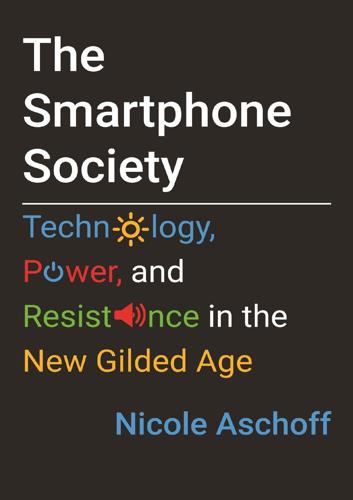
The Smartphone Society
by
Nicole Aschoff
They promise to remake markets and reengineer society through mobile tech and killer apps and venture capitalists are enthralled. They could be getting a piece of the next Facebook, the next Slack (a popular workflow platform), the next Uber. Individual investors such as Carl Icahn, venture capital firms such as Andreessen Horowitz, and funds such as Softbank’s Vision Fund and the Collaborative Fund have dumped hundreds of billions of dollars into tech start-ups over the past decade. The Silicon Valley spirit is even bigger than the promise of its platforms to create value and success for individuals and firms, however. Silicon Valley, we’re told, is ushering in a new age—a digital age of limitless possibility.
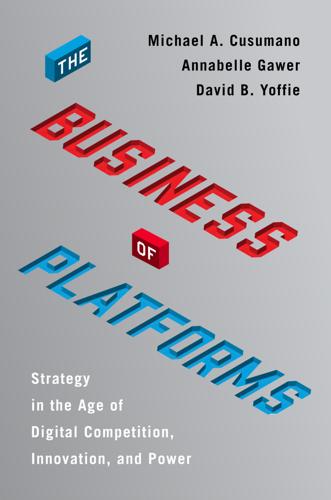
The Business of Platforms: Strategy in the Age of Digital Competition, Innovation, and Power
by
Michael A. Cusumano
,
Annabelle Gawer
and
David B. Yoffie
Published 6 May 2019
Consequently, the company was forced to spend billions of dollars in venture capital and operating cash flow simply to maintain the status quo. Rapid growth in existing as well as new markets then required additional expenses and investments. Overall, Uber has grown mostly because of generous capital providers (largely sovereign wealth funds and SoftBank’s Vision Fund). Investors seem to be betting on a winner-take-all-or-most outcome where Uber outlasts both digital and conventional competitors, and then eventually raises prices or reduces costly subsidies. Second, transaction platforms “reduce friction” to facilitate interactions among platform participants.

AI Superpowers: China, Silicon Valley, and the New World Order
by
Kai-Fu Lee
Published 14 Sep 2018
That dearth of innovation financing meant many good ideas likely never got off the ground, and successful implementation of the GPTs scaled far more slowly. Today, VC funding is a well-oiled machine dedicated to the creation and commercialization of new technology. In 2017, global venture funding set a new record with $148 billion invested, egged on by the creation of Softbank’s $100 billion “vision fund,” which will be disbursed in the coming years. That same year, global VC funding for AI startups leaped to $15.2 billion, a 141 percent increase over 2016. That money relentlessly seeks out ways to wring every dollar of productivity out of a GPT like artificial intelligence, with a particular fondness for moonshot ideas that could disrupt and recreate an entire industry.
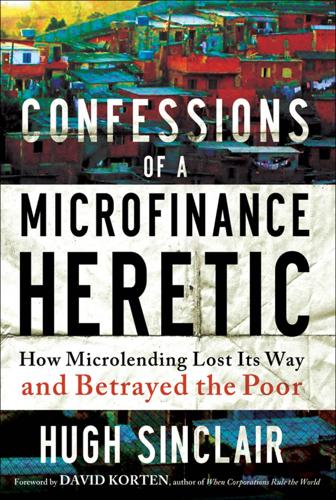
Confessions of a Microfinance Heretic
by
Hugh Sinclair
Published 4 Oct 2012
Center for Global Development, David Roodman’s Microfinance Open Book blog, January 31, 2011, http://blogs.cgdev.org/open_book/2011/01/compartamos-and-the-meaning-of-interest-rates.php. 7. Jonas Blume and Julika Breyer, Microfinance and Child Labour (Geneva: International Labour Office, 2011). Only one microfinance fund has explicit policies regarding child labor: World Vision, which operates a number of MFIs through its subsidiary Vision Fund International. 8. Marguerite Robinson, The Microfinance Revolution, vol. 2, Lessons from Indonesia (Washington, D.C.: World Bank, 2002). 9. See http://indiamicrofinance.com/bono-quote-microfinance.html. 10. Vivienne Walt, “Does Microfinancing Really Work? A New Book Says No,” Time, January 6, 2012. 11.
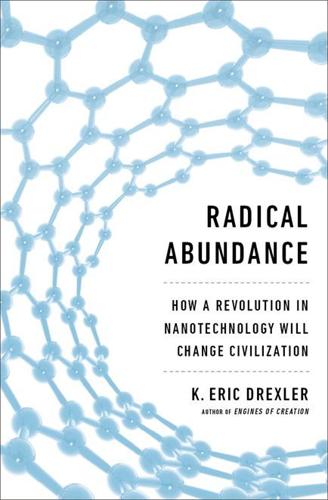
Radical Abundance: How a Revolution in Nanotechnology Will Change Civilization
by
K. Eric Drexler
Published 6 May 2013
And so nanotechnology researchers found themselves confronting persistent questions about nanomachines, building with atoms, and tiny robots that might run amok, all muddled together and attributed to the author of a book called Engines of Creation. And they attempted to squelch these questions, not by correcting misconceptions, but by wholesale rejection of a broad swath of ideas that they, too, had misunderstood. Visions, Funding, and a Perfect Storm The same fuzzy perceptions that enabled machines to become bugs in the public imagination also enabled a hodge-podge of nanoscale technologies—not molecular engineering—to appear to be the leading edge of the APM revolution—or something like that, though nothing was clear.

Dark Towers: Deutsche Bank, Donald Trump, and an Epic Trail of Destruction
by
David Enrich
Published 18 Feb 2020
“Indian ‘bond junkie’ ” : The Economist, “A Giant Hedge Fund,” August 26, 2004. Misra’s industry awards : Nicholas Dunbar, The Devil’s Derivatives: The Untold Story of the Slick Traders and Hapless Regulators Who Almost Blew Up Wall Street . . . and Are Ready to Do It Again, 2011, 100. Removing smoke detectors : Tom Braithwaite, “SoftBank’s $100bn Vision Fund Needs Wall St Trader to Come Good,” Financial Times, August 25, 2017. “Mr. Basis Point”: Suzi Ring, Gavin Finch, and Franz Wild, “From a $126 Million Bonus to Jail,” Bloomberg News, March 19, 2018. Leverage ratios : Adam Tooze, Crashed: How a Decade of Financial Crises Changed the World, 2018, 88.
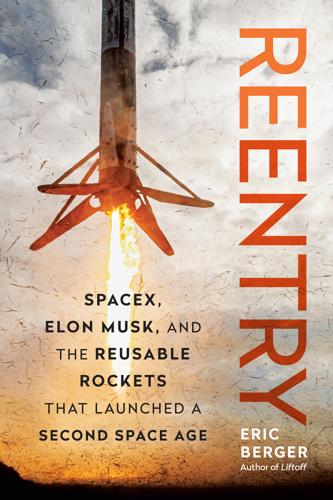
Reentry: SpaceX, Elon Musk, and the Reusable Rockets That Launched a Second Space Age
by
Eric Berger
Published 23 Sep 2024
With SpaceX on a résumé, an engineer could write a ticket to anywhere in the industry. Where Musk offered a lot, he also made wrenching demands. During crunch time on important projects, to work at SpaceX meant to live at SpaceX. An employee might go home for a few hours to sleep, but one’s mind never strayed far from the job. Musk provided the vision, funding, and intense focus on building a reusable orbital rocket. He frequently led technical meetings and often made the most difficult decisions. And always, he pushed relentlessly forward, seeking to bring projects toward completion. But sometimes these project deadlines were arbitrary, driven by some external event rather than a reasonable schedule.

The Gifted Adult: A Revolutionary Guide for Liberating Everyday Genius(tm)
by
Mary-Elaine Jacobsen
Published 2 Nov 1999
For instance, he felt such kinship with other polio victims that he pushed for Warm Springs to be more than a treatment center—he wanted it to be a springboard for a cure. He enlisted the help of his friend George Allen, a businessman, to raise money (later through the March of Dimes) to fight for a cure for polio. Another ripple effect of FDR’s vision funded the work of Jonas Salk and Albert Sabin, the heroes whose efforts have nearly wiped the disease from the face of the earth. Like most evolutionaries, FDR had some enemies, but his public expression of his natural optimism and his radical New Deal programs won the confidence and hearts of the majority of Americans.

Inside the House of Money: Top Hedge Fund Traders on Profiting in a Global Market
by
Steven Drobny
Published 31 Mar 2006
Although there will always be a hotshot hedge fund manager who produces attractive results for a period of time through a focused portfolio approach, the key to consistent perfor- WHY GLOBAL MACRO IS THE WAY TO GO 349 mance over time is diversifying smart bets. Global macro’s mandate affords the latitude to achieve such diversification. For consistent superior riskadjusted returns, global macro is the way to go. Dr. Lee R. Thomas III is the chief investment officer of Alpha Vision Capital and the Vision Fund Group, a suite of global macro absolute return products offered by Allianz Global Investors. Prior to Vision, Dr. Thomas was managing director and the chief global strategist at Pacific Investment Management Company (PIMCO). Prior to PIMCO, Thomas worked for Investcorp, Chase, Citibank, and Goldman Sachs.

The Gifted Adult: A Revolutionary Guide for Liberating Everyday Genius(tm)
by
Mary-Elaine Jacobsen
Published 18 Feb 2015
For instance, he felt such kinship with other polio victims that he pushed for Warm Springs to be more than a treatment center—he wanted it to be a springboard for a cure. He enlisted the help of his friend George Allen, a businessman, to raise money (later through the March of Dimes) to fight for a cure for polio. Another ripple effect of FDR’s vision funded the work of Jonas Salk and Albert Sabin, the heroes whose efforts have nearly wiped the disease from the face of the earth. Like most evolutionaries, FDR had some enemies, but his public expression of his natural optimism and his radical New Deal programs won the confidence and hearts of the majority of Americans.
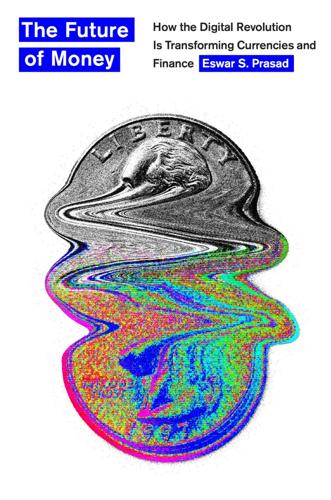
The Future of Money: How the Digital Revolution Is Transforming Currencies and Finance
by
Eswar S. Prasad
Published 27 Sep 2021
In less than a decade, the value of a 10 percent stake—which cost Thiel half a million dollars and Accel $12 million a year later—had risen to more than $10 billion. At the other end of the spectrum is a case involving Japan’s SoftBank Group. Its risk-taking chairman, Masayoshi Son, set up the $100 billion Vision Fund, which came to be known for undertaking private equity investments in technology companies in their infancy. Early investments in companies such as Alibaba, Yahoo!, and Uber yielded substantial profits. Son acquired the reputation of a visionary investor in technology start-ups. In 2016, Son met Adam Neumann, the cofounder of WeWork, and soon became enamored of Neumann’s business idea.

Palo Alto: A History of California, Capitalism, and the World
by
Malcolm Harris
Published 14 Feb 2023
He put $380 million in Twitter, and in 2011 he teamed with famed Silicon Valley angel Ron Conway to offer $150,000 to each and every start-up in the Bay Area tech accelerator Y Combinator, laying down a bet on the whole regional ecosystem.29 When it came out in 2017 that a significant amount of DST’s capital originated with the Russian state, the news yielded shrugs in the industry.30 No one could suck that kind of money out of the country without close ties to the government.vii And besides, sovereign wealth funds invest in Silicon Valley all the time. Saudi prince Al Waleed bin Talal made a crucial nine-figure investment in Apple in 1997.31 SoftBank, one of the biggest investment funds hunting in Silicon Valley, got most of its game-changing $100 billion Vision Fund from Gulf monarchies.32 Why wouldn’t Putin want to put money in Facebook? As far as the gangster state was concerned, there was no better place to allocate the nation’s cash. Based on the numbers, it’s hard to disagree, and in Silicon Valley, which Milner now calls home, he’s in good standing in the highest reaches of the capitalist elite.